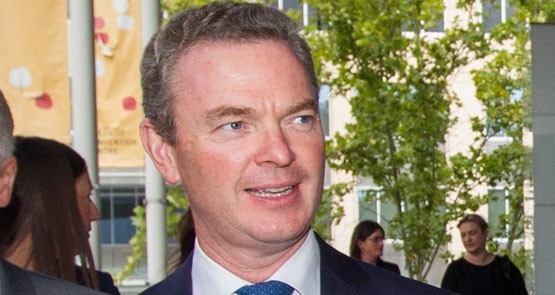
After going to the election with a promise of no cuts to education, the Abbott government began pursuing radical changes to the funding of universities. In 2014 and most of 2015 then-education minister Christopher Pyne’s reforms to Australia’s tertiary education system dominated the national agenda, but they twice failed to pass the Senate due to a lack of support from Labor, the Greens and most of the crossbench.
Pyne’s fervent desperation to pass the bill climaxed in an odd exchange with Sky News anchor David Speers, in which Pyne declared himself “a fixer”.
Shortly after becoming Education Minister, Simon Birmingham announced the government would not pursue deregulation in 2015, but he did not make definitive statements about whether the reform would be pursued in the future. But what is the current state of play?
What are the current university fee arrangements?
Under the current system universities have a maximum price they can charge students and receive a contribution from government of about $9000 per student per year. Students are able to pay nothing upfront and repay their fees via a loan called HECS (the higher education contribution scheme). But the amount students can borrow is capped at up to $120,000 and interest is charged in line with CPI.
What are the proposed reforms?
First announced in the infamous 2014 budget the government’s proposed changes centre around the deregulation of university fees, as well as reducing government funding by 20% and, in its original incarnation, increasing the interest rate paid on student loans to the 10-year bond rate and removing the cap on the total amount borrowed.
Following subsequent failures in the Senate the interest rate hike on student loans was dropped.
Why does the government want them?
The government sees the proposed reforms as necessary both in order to increase the quality of our universities to remain internationally competitive and to reduce the burden on the budget.
The cost of tertiary education to the budget has grown at twice the rate of GDP since 2009 for a number of reasons. The main contributor has been the Gillard government’s decision to uncap undergraduate university places which has led to rapid increases in enrolments since its introduction in 2012.
Why have they failed so far?
Although the changes were initially supported by the Group of Eight (a collective of Australia’s most prestigious universities) they failed to win the support of Labor, the Greens and many of the crossbenchers. This is largely because these changes are seen as making high quality education available only to children of wealthy families who can afford to pay. The proposed changes are not popular in the community with polls indicating support in the mid-20s.
The Senate retained its opposition to the reforms even after Pyne offered to scrap the 20% cut to government funding.
Where are they at now?
Birmingham remains unclear about whether deregulation is still on the table.
However, the budget savings from decreasing the government contribution have been included in the most recent MYEFO as starting next year, indicating that the government still plans to pursue the changes.
Labor has announced a plan to increase government funding for universities that would cost government an additional $2.5 billion over the first four years.
In his recent address to the Universities Australia conference Birmingham said that “we do need to also reconsider the balance between public and private contributions versus public and private benefits”, possibly indicating that an announcement would be made in the lead-up to the next election.








I suspect that the Coalition won’t talk about higher education funding until the Budget on 10 May. The DD will be called the next day and kapoom, this issue will be quickly absorbed into the information overload of the election campaign.
There will be so much policy being dumped on the voters that it will take a vigilant media and opposition to interrogate all the information.
I think education is a core issue for Labor and feel confident they will not let it slide under the radar.